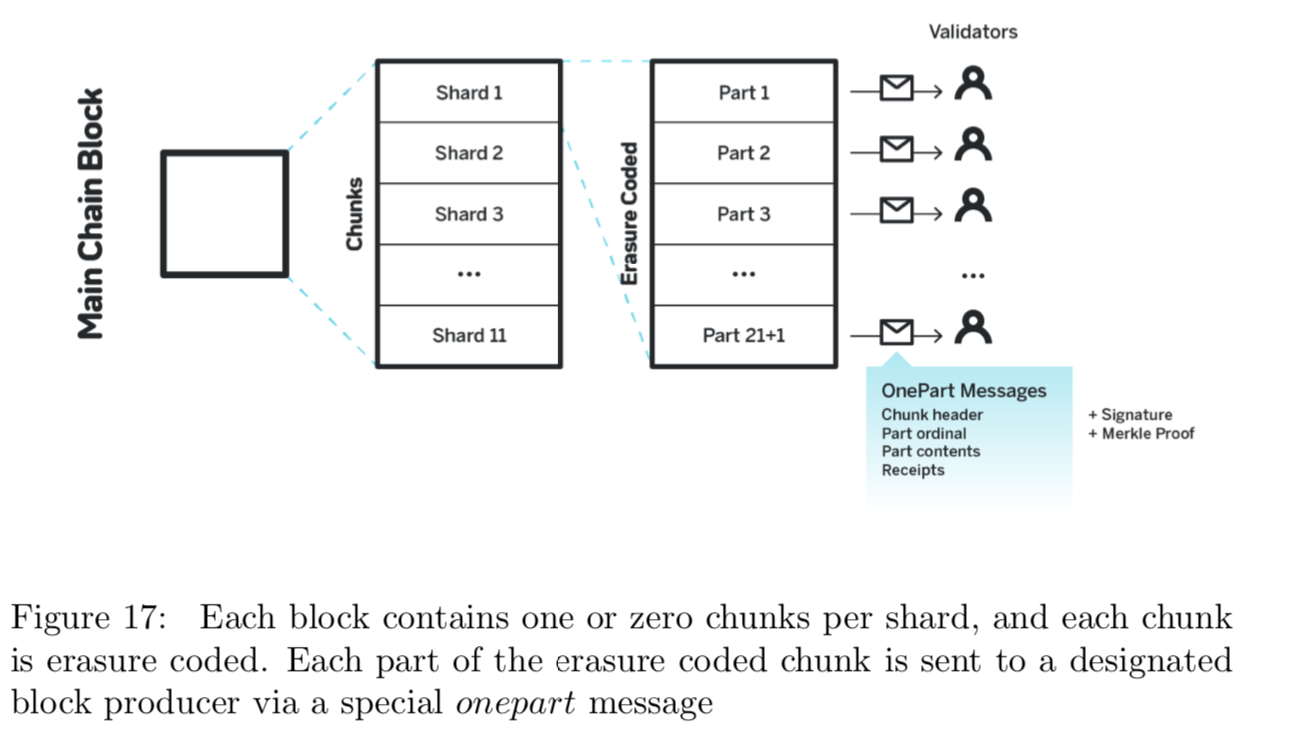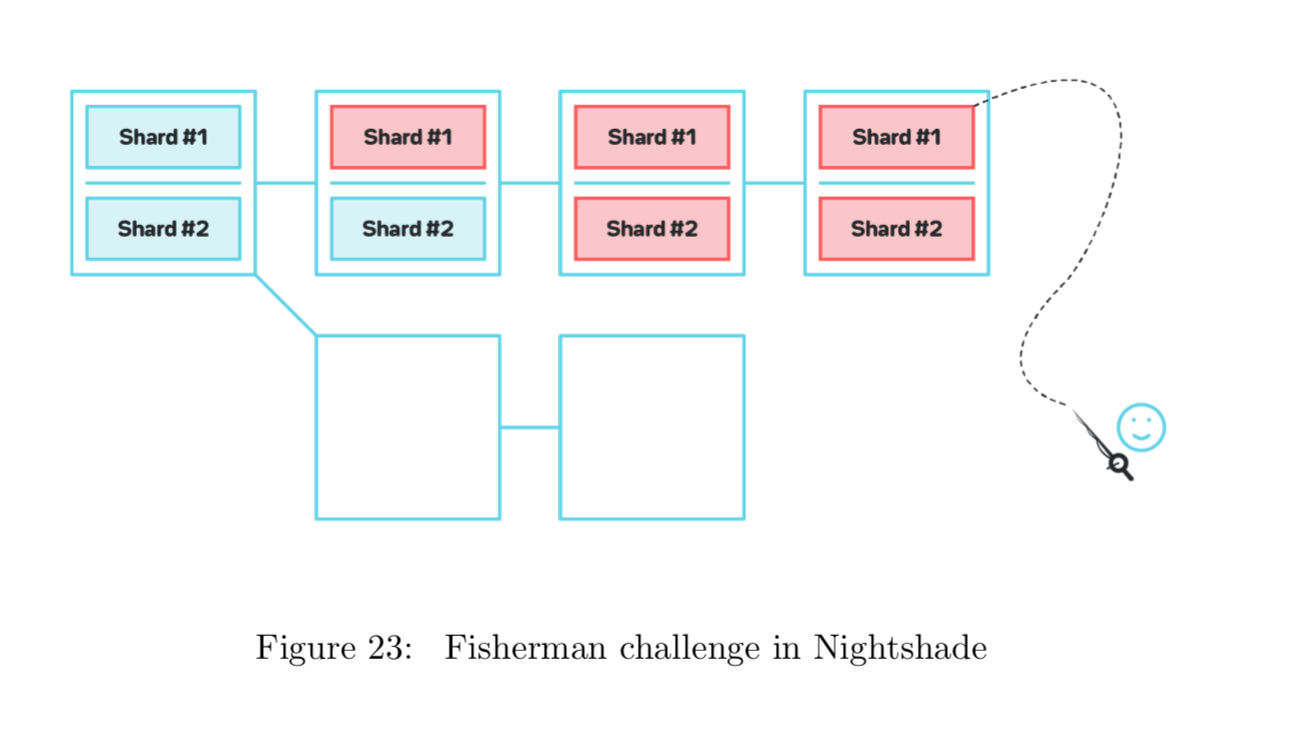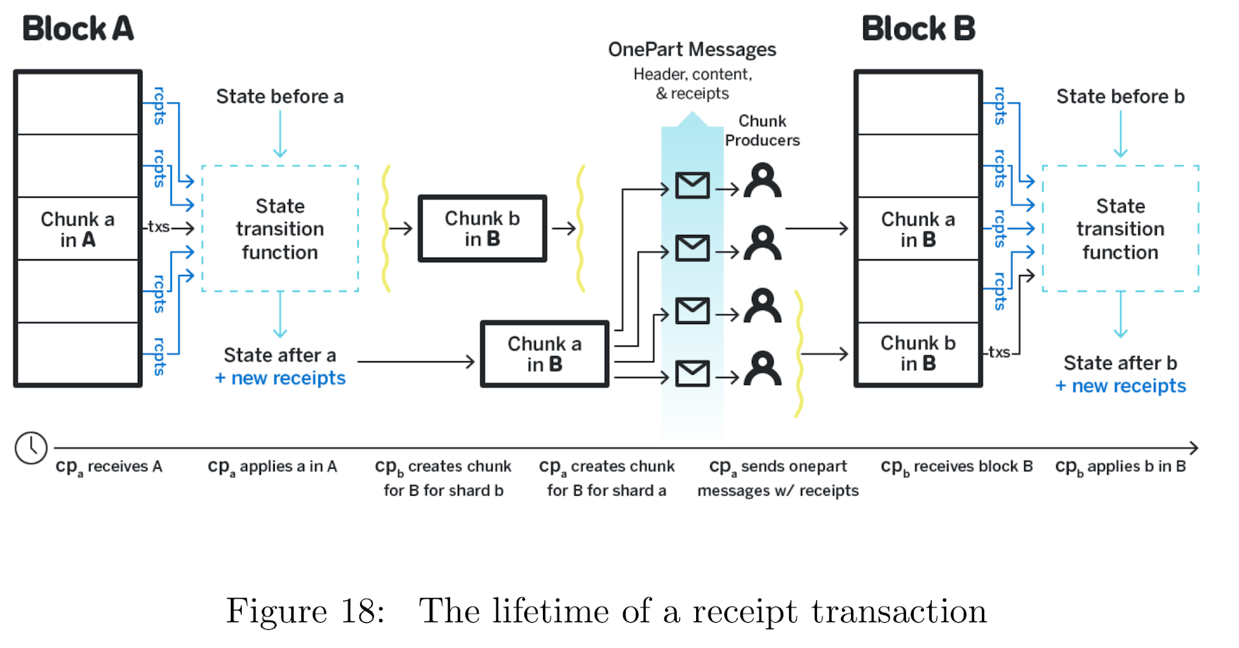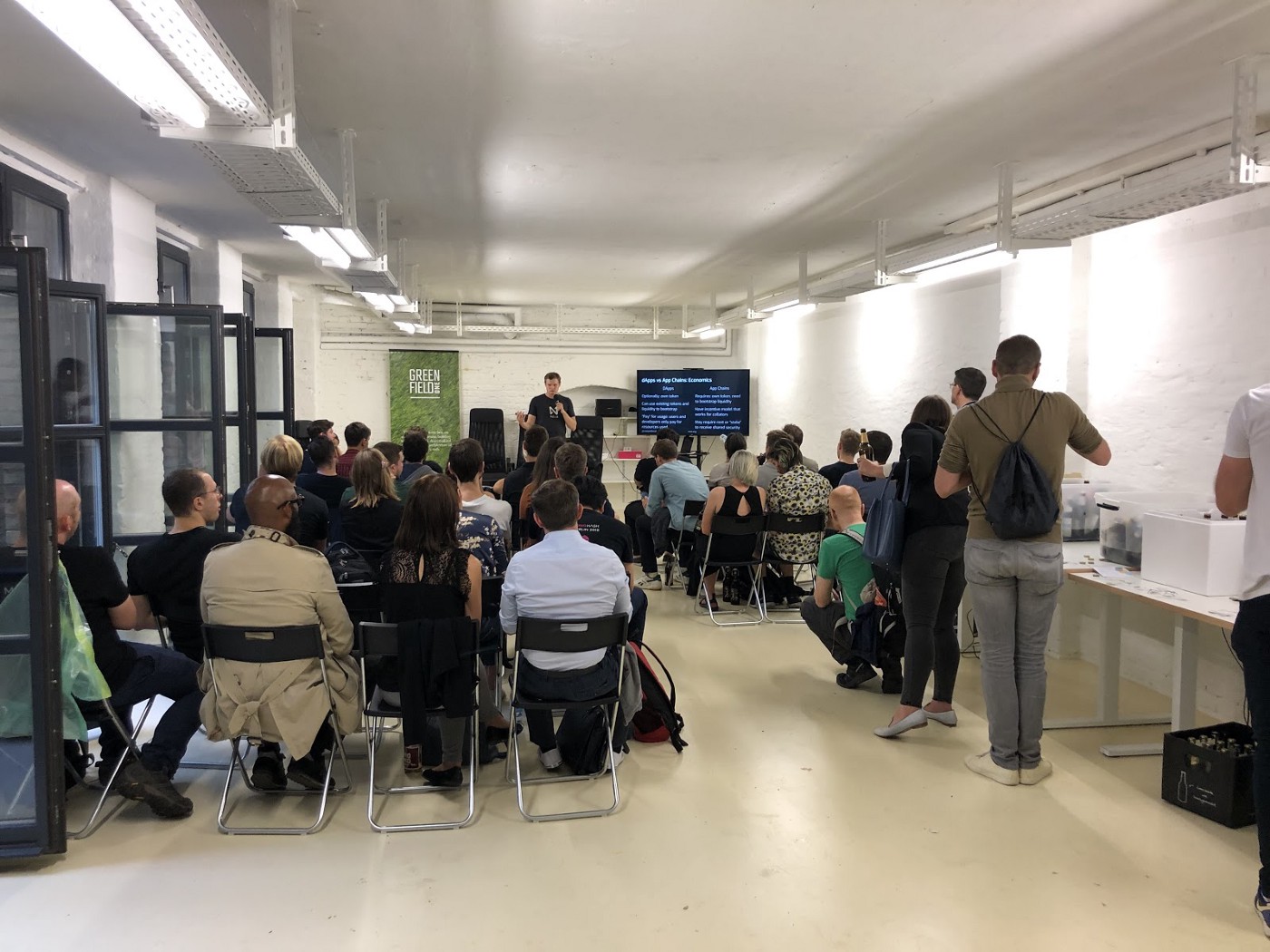NEAR Protocol raises $21.6m and launches first phase of its MainNet
by Greenfield, May 09
Earlier this week NEAR Protocol announced their latest $21.6m. funding round led by a16z — with Greenfield we also participated again after having invested in their previous round back in 2019. This is a huge milestone for the team but not only that, equally important the team launched the first phase of their mainnet with a big announcement during this week’s Ready Layer One conference.
Let’s dive into what NEAR Protocol is all about and what the team has achieved since their last funding round back in 2019.
NEAR Protocol is a sharded public, proof-of-stake blockchain and enables mainstream developer as well as user adoption on their smart contract platform offering composability of open-services and state among products and apps, building towards a new open web. Sharding splits the network’s workload into multiple chunks, that can efficiently communicate with each other, thus horizontally scaling through parallel execution and storage, while retaining decentralization — reducing the theoretical limits to capacity dramatically. NEAR is the first blockchain to implement state sharding, that reduces the requirements in state maintenance for individual nodes, allowing for a more decentralized network.
Building bridges & developer adoption
The NEAR team has continued to be extremely active in fostering a vibrant dialogue with the whole web3 space and their leading communities. A great example is the Ready Layer One conference and its subsequent hackathon, which was initiated by them, featured the top minds in the space from Vitalik Buterin of Ethereum to Juan Benet of Protocol Labs/Filecoin. In addition, they have been rolling out their Beta Accelerator program and Open Web Collective in order to support developers and entrepreneurs building on NEAR. First projects building on their chain include ARterra (esports fan engagement platform), TessaB (second-hand mobile phone marketplace with traceability solutions), Flux Protocol (open market protocol), Stardust (revenue-sharing secondary marketplace for gaming) and 1inch (DEX aggregator, initially built on Ethereum with strong early traction). The last example is interesting in particular, as there is also a NEAR — Ethereum bridge being built, that will allow interoperability between the chains for exchanging tokens, as well as supporting more complex smart-contract calls. Thus, NEAR can benefit from the vibrant Ethereum token- and dapp-ecosystem, while bringing scalability to the table. Last but not least, they are continuing to build a rock star team — now featuring 28 contributors to their core Github repo, as well as a strong follower-ship, decentralizing development across the world.
Sharding design & staged rollout over the coming months
As opposed other sharding designs like the concept of a Beacon Chain and many Shard Chains in ETH 2.0 (whose launch timeline has a history of delays) or a Relaychain and many Parachains in Polkadot, NEAR uses a simplified design, viewing the Blockchain as one holistic chain and separating shards into chunks (reduced complexity makes it easier to argue about properties and makes implementation faster). There are nodes producing individual chunks (thus validating the state of the related shard) and nodes that produce whole blocks out of the individual chunks. In a recent edition of their brilliant whiteboard series, Ethereum 2.0 researcher Justin Drake interviews NEAR co-founder Alex, comparing their designs in more detail. The NEAR team excels at assembling the best techniques available, building custom solutions only where necessary in order to execute fast, while prioritizing security. A POA (proof-of-authority) MainNet is already live since April and the Proof-of-Stake version will launch in the next phase of their roadmap, this summer. They will start with a handful of shards to test in production, while additional shards will be added on a continuous basis (scaling with demand, while dynamic re-sharding optimizes data allocation continuously, while leaving capacity buffers for demand spikes on individual shards).
Efficient low-latency block production with economic/game-theoretic security guarantees
Their new Doomslug block production technique offers efficiency gains in having some sense of finality (irreversibility if no validator gets slashed — thus economic security guarantee = stake of 1 validator) after only one round of communication between peers, while the Nightshade finality gadget provides stronger security guarantees after another round of communication (full BFT byzantine fault tolerance — ⅓ of stake needs to be corrupt/be slashed). Another advantage is that Doomslug continues finalizing blocks with just more than half of block producers online (as opposed to the required ⅔ in BFT). Thus, using such hybrid models NEAR reaches pareto improvements in the trade-off space (decentralization, scalability, security).
NEAR provides compelling solutions for the major problems in sharded blockchain design: 1) Data availability, 2) Data validity, especially facing adaptive shard corruption, 3) Cross-shard-communication.
Data availability

Once a chunk producer produces a chunk, they create an erasure coded version of it and send it to block producers. The block producers only process main chain blocks if they either have the part of the erasure coded chunk or if they maintain the state of the chunk, so they can reconstruct the entire chunk. For a particular chunk to be available it is enough that ⅙ +1 of the block producers have their parts and serve them (based on the redundancy in the erasure coding scheme). Thus, for as long as the number of malicious actors does not exceed ⅓, no chain that has more than half block producers building it can have unavailable chunks.
State validity & adaptive corruption

As the nature of sharded blockchains entails that not every validator validates every shard/chunk, there is a possibility that a block contains an invalid chunk. This can happen if the validators of one shard/chunk have been selectively corrupted or are malicious, which is considerably cheaper than corrupting the whole chain (since economic stake is distributed among shards). NEAR solves this problem game-theoretically, by a class of nodes “fishermen” that can challenge an invalid state transition. In order to cause a roll-back of the invalid transition, they need to provide a succinct proof of the fraud, with which they can prove the case to block producers, who do not need to have downloaded the full state of all chunks. As a result, the system is secure, if there is at least one honest fisherman validating each chunk, that can uncover frauds if they should happen. Rational actors will thus follow the protocol honestly in order to avoid having their stake slashed.
Additionally, the randomly selected validators for each shard are concealed and thus an attacker willing to corrupt a validator of a particular chunk would need to publicly announce such an attempt. This attempt would attract actors to validate that shard in order to act as a fisherman.
Cross-shard-communication
If a transaction touches more than one shard, it has to be sequentially executed in each shard. The transaction is sent to the first shard, and once the transaction is included in the chunk, affecting a state transition in the next block, it generates a “receipt” transaction. This receipt transaction is then routed to the next shard in which the transaction needs to be executed.

Developer tools and abstraction
First and foremost NEAR is working on providing a superior user and developer experience on their blockchain platform, of which scalability is one crucial factor. By relying on secure programming languages such as Rust and AssemblyScript and a WebAssembly-based virtual machine, they are leveraging well adopted standards outside of web3 developer communities. NEAR’s development suite provides developers with a development experience they are used to from traditional web apps (incl. one-click deploy, integrated unit testing, easy front-end integration and debugging from the web browser’s developer console). The team further puts a strong emphasis to abstract away specific complexities in developing on NEAR (such as managing dynamic re-sharding and cross-shard calls).
Broader vision enabled by NEAR Protocol
Open, crypto-economic, distributed systems and engaged communities, will create more resilient internet and finance infrastructure, as well as more efficient markets by decentralizing control, while maintaining consistent data and network effects. Openness promotes collaboration and permissionless innovation on the shoulders of giants, leveraging knowledge and data at the edges. Empowered users maintain control over their data and assets, promoting sovereignty as well as avoiding excessive monopoly power and single points of failure by design. Trust becomes commoditized by cryptographically proving relevant events of the past and providing economic assurances of events in the future, in a publicly verifiable system with differential privacy for the individual, which allows for novel coordination mechanisms.
We have been huge fans of the team from when we first met them back in late summer of 2018 and it has been an absolute pleasure to be able to work with them along the way and become a (small) part of their journey as founders.
